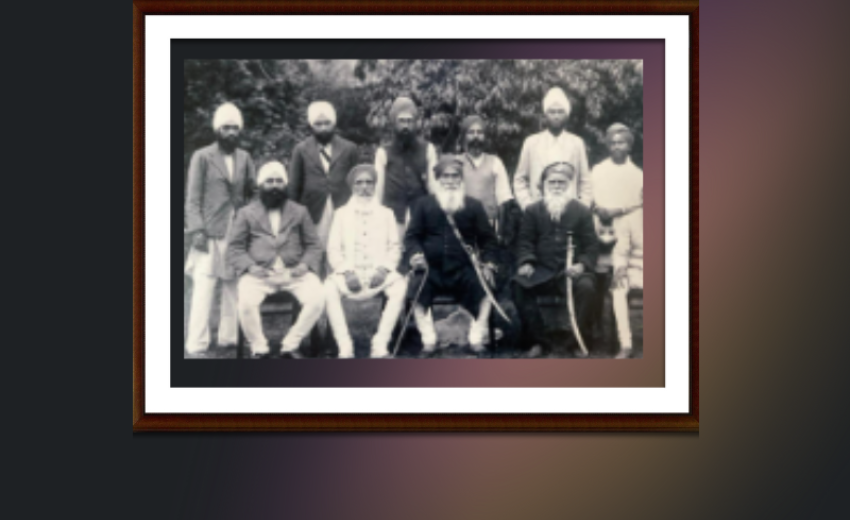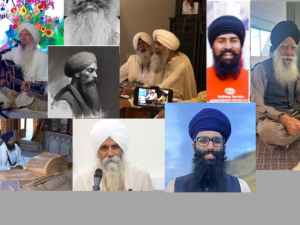Bhai Sahib Bhai Randhir Singh Ji was renowned as an enlightened figure and a true embodiment of Chardikala, Sant, Saphi, Patriot, Prolific writer, scholar, and a revolutionary of Kathni Karni. He was often referred to as the Mobile University of Dharma and the originator of Rainsbai 'Kirtan'. During my time as a student at Khalsa College Amritsar, I found myself imprisoned in Central Jail Amritsar for several months in 1980-81 due to my role as the editor of the Sikh Students Federation's monthly 'Shamsheer-Dast'. It was during this challenging period that a visiting Gur Sikh brought with him Bhai Sahib Ji's famous book ' Jail Chittian’. At first, I had heard of the book but had not seen it. The joy of reading this book in the confines of the prison can only be understood by those who experienced it. Bhai Sahib Ji's prose, imbued with Sikhi, was filled with memorable moments and golden pearls, serving as guiding lights for our future journeys.
Bhai Sahib's life resembles pure and clean, radiating the melody of enchanting ragas. The serene landscapes of Kashmir, with its cool breezes, flowing streams, green lush gardens, natural beauty, vast mountain ranges, vibrant flowers, and melodious bird songs, always touched his soul. The plan for Bhai Sahib to visit Kashmir was set in motion when Akali Kaur Singh Nihang Ji extended an invitation. Their initial meeting dated back to 1907 at the Gurdwara of Khalsa College in Amritsar. They met again in 1930 at Attari station when Bhai Sahib was being transported to Lahore Jail as a prisoner.
Following his release from Multan Jail, Bhai Sahib, along with his Kirtaniya Jatha, set foot in the land of 'Chakar' (Kashmir). Akali Ji warmly welcomed him. Bhai Sahib spent approximately a month in Kashmir, experiencing the enchanting beauty of 'Chakar'. It was in the serene atmosphere of 'Chakar Ashram' that Bhai Sahib penned the book 'Anhad Shabad'. He also spent a night in a tent, near the natural stream of 'Kalyansar', just 10 km from Chakar. In Baramulla, Bhai Sahib stayed for several days, meeting prominent Sikhs and Khatris. These devoted individuals actively served Guru Ghar and were deeply connected to it. Bhai Sahib visited historical Gurdwaras in Kashmir, including Chakuthi, Uri, and Gurdwara Chhevin Patshahi in Baramulla. In Baramulla, Bhai Sahib stayed at the house of a Singh who was a post office inspector. They conducted continuous Kirtan, and in the morning, 'Asa Ki Vaar' was recited. Bhai Sahib's presence brought vibrancy to the environment, with the accompaniment of drums, chimes, and musical instruments. In Kashmir, Naam-simran, Kirtan, and spiritual contemplation held great significance, and Bhai Sahib's wisdom and thoughts deeply resonated with the Sangat.
In September 1946, during a visit to Baramulla, Srinagar, Bhai Sahib stayed at the residence of S. Dayal Singh, the owner of Imperial Furniture Srinagar. Bhai Sahib had visited their house several times before, and under the influence of Bhai Sahib and other Gurmukhs, S. Dayal Singh also began participating in Kirtan. During this visit, Akali Kaur Singh joined the discussion, which revolved around the topic of 'Maas Parthai' (Regarding Meat). This discussion was significant, considering the perspective on 'Maas'. A memorable and historically valuable photograph was taken in Kashmir, capturing Bhai Sahib and Akali Ji together. Bhai Sahib's visits to Kashmir were infrequent, with around five or six trips, the last one in September 1944. He consistently enthralled the Sangat with his Kirtan and explanations that were simple yet impactful. The multifaceted nature of his personality and his dedication to Gurbani-oriented living have indeed left an invaluable legacy for the nation.





